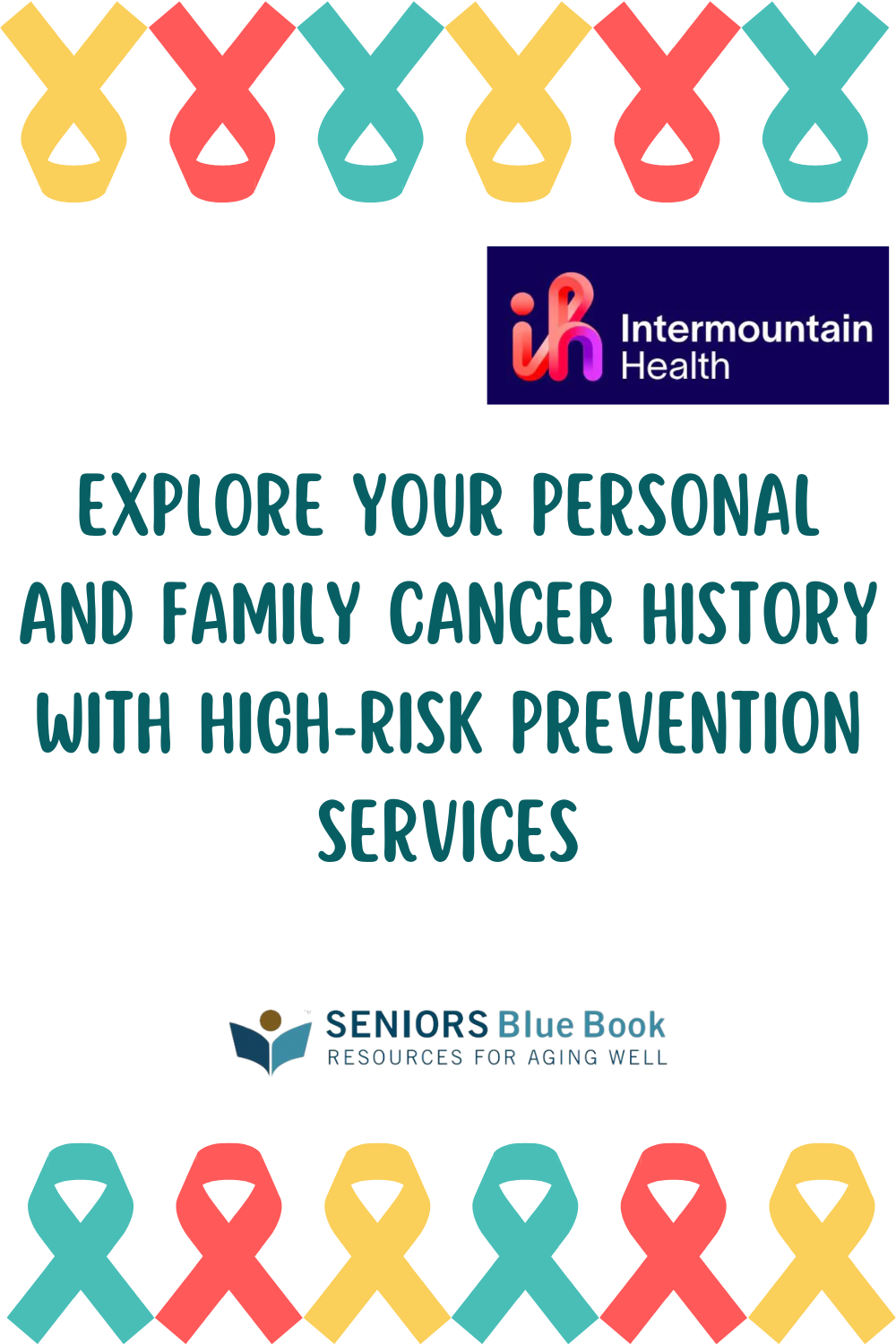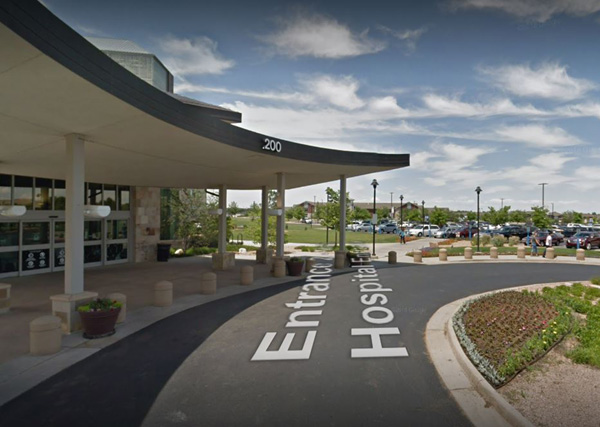Explore your Personal and Family Cancer History with High-Risk Prevention Services
Intermountain Health Good Samaritan Hospital
For more information about the author, click to view their website: Intermountain Health Good Samaritan Hospital
Nov 25, 2024
Colorado - Boulder County
October is Breast Cancer Awareness Month, and it’s the perfect time to talk about the importance of breast cancer prevention and detection. At Intermountain Health, we’re dedicated to helping you stay ahead of cancer with our High-Risk Cancer Prevention Clinic. Let’s dive into why early detection is crucial and how we can support you.
Why Prevention and Early Detection Matter
Breast cancer is one of the most common cancers among women, but the good news is that early detection can significantly improve outcomes. Regular mammograms are a key part of breast cancer screening because they can detect cancer early when it’s most treatable. However, for those at high risk due to genetic factors, mammograms alone might not be enough.
Maricel Purcell, a Cancer Genetics Nurse Practitioner at our High-Risk Cancer Prevention Clinic, explains, “Regular mammograms are a crucial component of breast cancer screening and can detect cancer early when it’s treatable. However, for individuals at high risk due to genetic factors, mammograms alone may not be sufficient.”
Understanding Your Risk
Knowing your genetic risk can help you take proactive steps to protect your health.
“Understanding your genetic risk allows you to take proactive steps to protect your health. Having this information doesn’t mean you will definitely develop cancer. It means you have the opportunity to take preventive measures and make informed decisions about your health,” says Purcell.
If you have a family history of cancer, especially if cancers occurred at a young age or if multiple family members are affected, you should consider seeing a cancer genetics provider. Indicators also include having a known genetic mutation in the family, multiple types of cancer in a single individual, or belonging to certain groups with higher prevalence of specific mutations.
Personalized Care at Intermountain Health
At Intermountain Health, we offer a range of services to help manage and reduce your cancer risk. Our High-Risk Cancer Prevention Clinic provides:
- Genetic Testing: To identify specific gene mutations that increase cancer risk.
- Increased Screening and Surveillance: Including additional methods like breast MRI, which can detect cancers that mammograms might miss.
- Personalized Management Plans: Tailored to your specific risk profile to catch cancer early or reduce your risk.
- Lifestyle Recommendations: Tips on diet, exercise, and other lifestyle changes to lower your cancer risk.
- Support Resources: Counseling and support groups to help you navigate your journey.
Telehealth Options
One of the standout features of our High-Risk Cancer Prevention Clinic is the availability of telehealth options. You can have video visits with our specialists without having to leave your house. This makes it easier than ever to get the care you need without the hassle of travel. Whether it’s a genetic counseling session or a follow-up appointment, our telehealth services ensure you stay connected with your healthcare team.
“We’re shifting the focus from treatment to prevention as often as possible. And we do this all from the comfort of your own home,” says Purcell.
'Knowledge Is Power'
Finding out you may be at high risk for cancer can be overwhelming, but you’re not alone. “For those feeling overwhelmed, I offer resources such as counseling and support groups and I ensure they know they are not alone in this journey,” Purcell reassures.
Sabrina Feldman, a vibrant 39-year-old from Denver, Colorado, recently embarked on a life-changing journey at Intermountain Health’s high-risk cancer prevention clinic. With a family history of cancer, Sabrina always had a nagging feeling about her health. “On the back of my mind, I could have a high risk,” she shared. Her grandparents had died of ovarian cancer, but it wasn’t until her cousin tested positive for BRCA 2 about four years ago that Sabrina started to connect the dots.
Despite her sister testing negative for the gene, Sabrina decided to move forward with her own testing in September, assuming she wouldn’t have it. “Sure enough, I did have it,” she said. This revelation set her on a proactive path to ensure her health and safety. “I took all the proactive things. I figured any preventative things I can do to make sure I am healthy and safe and can live a long life without something being invasive.”
Her journey began with genetic counseling and imaging. “As soon as the genetic counselor sent my primary care provider the results, she immediately called for imaging,” Sabrina recalled. The day she went for her mammogram and sonogram was nerve-wracking. “If I thought I didn’t have BRCA 2 and I did, now every result would be the same. I panicked.” Fortunately, the results came back in just five hours, and everything was negative. “We have detected no abnormal cells,” she was told, which brought immense relief.
Sabrina then reached out to a medical oncologist for further options and opportunities. She met Lisa Ahrendt, MD, who was incredibly supportive. “She was very clear, you know you are supposed to get the surgeries right away and your ovaries removed. So I was nervous going into the appointment. She kept saying when or if you decided to move forward. She heard me, she saw me. Nothing was scary.”
Dr. Ahrendt spent an hour discussing the best course of action for Sabrina, making her feel comfortable and understood. “This is something you’ll have to deal with and monitor, it doesn’t mean you have to take action,” Dr. Ahrendt reassured her. Sabrina felt empowered by the knowledge and the support she received. “Knowledge is power. You can’t make any decisions until you have all the answers. Make sure you know that there are options.”
Sabrina’s journey isn’t over yet. She has a couple more screenings lined up and is considering her options carefully.
The clinic has created a supportive community for Sabrina. “This clinic created such a great community. Find a place that you feel comfortable and heard in is so important.” With the help of a social worker and a streamlined team of specialists, Sabrina feels at ease. “It’s now out of my mind. Is this going to be looming over me forever? I felt like everything was there. It makes it so easy and so approachable.”
Sabrina’s story is a testament to the power of knowledge and the importance of a supportive healthcare community. Her proactive approach and the care she received have empowered her to take control of her health and her future.
At Intermountain Health, we’re here to support you with personalized care and comprehensive services. If you think you might be at high risk, don’t hesitate to reach out and schedule an appointment.
- To view the original version of this article visit intermountainhealthcare.org/blogs/explore-your-personal-and-family-cancer-history-with-high-risk-prevention-services
- Seniors Blue Book was not involved in the creation of this content.
Other Articles You May Like
Medication Tips For Seniors
Did you know that nearly one-third of the population has difficulty swallowing pills? Most people dont swallow pills correctly. This often results in gagging, choking, and vomiting, which usually results in people not taking their medications at all, or not taking the recommended dosage, which then results in a need for later additional medical care.If you are caring for a senior who has trouble swallowing their pills, here are some medication tips and some good news. Researchers have found new techniques that make pill-popping easier, even for large pills.German researchers recently tested two methods of swallowing pills and found that 80% of the time these methods worked better than the normal way of taking a pill. The first is the pop-bottle method, and it makes tablets go down with ease. The second is the lean-forward technique, which sends capsules straight down the throat. Both have been rigorously tested by 151 volunteers who swallowed numerous dummy pills for the sake of science. And now they are being shared with the world via their publication in the Annals of Family Medicine.Read about each method so you can try it yourself or have the senior you are caring for try it. Just may make life a little easier for you both.
Caregivers Forced to Choose Between Caring for a Loved One and a Job
At least 42 percent of U.S. workers have been caregivers for aging loved ones in the last five years. In fact, most family caregivers work full or part-time while caring for their parent, spouse, aunt, uncle, or other loved one. Juggling Your Job and Caring for a Loved One The majority (68 percent) of family caregivers report making work accommodations because of caregiving duties, including: Arriving late/leaving early or taking time off Cutting back on work hours Changing jobs Stopping work entirely If this is you, you understand the challenge of juggling work and caregiving. Youll want to know that AARP is fighting for workplace flexibility, like family leave or paid or unpaid sick leave, to support family caregivers as they balance work and caregiving responsibilities. AARP is pushing for legislation that would: Let employees use their existing sick time to help care for a family member; or Give employees a few hours of unpaid time each year to help care for their loved ones; or Allow employees unpaid leave to take their loved ones to the doctor, in the same way 15 states allow employees to take unpaid time off to attend parent-teacher conferences and school events.
Embarrassing Things People With Dementia Say
Many people with dementia lose their social filters and no longer understand what is or is not appropriate to say in public. They do not say embarrassing things intentionally but have indeed lost the lens they used to live with. You may have encountered situations like these: Person with Dementia upon hearing someone speaking a different language: Speak English! or they may use a racial slur to describe them.I have seen and heard many elders using racial references that were, to say the least, disrespectful. It doesnt necessarily mean the people are racist. Many of our elders grew up in much less diverse communities than we have today. They have simply lost whatever inhibitions they may have had. When they see someone of another ethnicity, they blurt out labels that they heard as youths, embarrassing everyone involved.How to respond: One of my clients used to make these remarks frequently. He also had travelled a lot. I would apologize calmly to the person and then begin talking about what language I thought they might be speaking and what country they might be from, asking my client if he had ever been there on his travels. This could lead him into a conversation about travel. If the person, he was making the remark about was on staff at the nursing home Id include them in the conversation.Person with Dementia, generally a man pinches a woman or otherwise acts out sexually: Nice butt!Stay calm and realize that this behavior is caused by the disease. Dementia has stripped your dad of his inhibitions and he really cant help it. Try not to overreact from embarrassment.How to respond: Calmly say, Thats inappropriate, Dad, or something to indicate that the action is not acceptable. It wont help to scold, however. Apologize to the person affected and then if possible, move your dad away. Explain to the person that dad has Alzheimers and his actions are the result of the disease. If you cant defuse the situation by moving him away, just allow the affected person to handle it. If it happens to a professional caregiver, they are trained to handle these situations.When these and other uncomfortable situations occur, we are embarrassed for ourselves and for the person our elder once was. Learning that we arent alone in enduring this public embarrassment helps, Talk with other caregivers, either in person or online, for perspective and the chance to laugh about these situations. When we share our stories with people who understand, our pain and embarrassment doesnt take on a life of its own. Try a caregiver forum, such as the one at AgingCare.com
Local Services By This Author
Intermountain Health Good Samaritan Hospital
Hospitals 200 Exempla Circle, Lafayette, Colorado, 80026Intermountain Health Good Samaritan Hospital is a community-based, acute-care hospital in Lafayette, Colorado. Intermountain Health is a nonprofit faith-based health system with hospitals in two states. At Intermountain Health Good Samaritan Hospital, we are happy to tell you about us: our compassionate caregivers, our clinical excellence, our award-winning care and even our beautiful campus. But its really all about you. Our patients and families are the center of every thought, communication and action that takes place in this healing space.
Intermountain Health Good Samaritan Hospital
Emergency Departments for Seniors 200 Exempla Circle, Lafayette, Colorado, 80026Intermountain Health Good Samaritan Hospital senior E.R. is Colorado's first E.R. facility constructed with seniors needs in mind. By implementing a philosophy of care for the geriatric patient and implementing a variety of screenings designed for the senior population, physicians hope that their senior E.R. will help lower readmission rates and reduce the risk of harmful drug interactions. In order to give excellent emergency care to seniors in our community including specialized screening and care, physicians and nurses have taken workshops in sensory appreciation and ageism to learn how to better communicate with older adults and their caregivers. The Senior ER provides a less chaotic and stressful environment for senior patients while optimizing their discharge to the most appropriate and safe environment.


